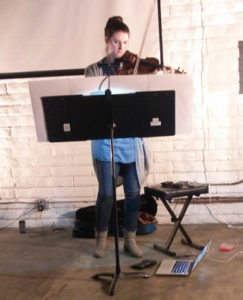 March 26, 2017 brought the opportunity to hear experimental music performed by John Eagle and Emily Call at the wulf @ Coaxial Arts. Since the sale of the former wulf building on Sante Fe Avenue last fall, various venues around town have been used for performances and the latest of these is Coaxial Arts on South Main Street. The space is smallish, but with the brick walls and overhead track lighting, Coaxial feels like a cross between Automata and Monk Space. Almost every chair was occupied as a knowledgeable crowd filed in on a quiet Sunday evening in downtown Los Angeles.
March 26, 2017 brought the opportunity to hear experimental music performed by John Eagle and Emily Call at the wulf @ Coaxial Arts. Since the sale of the former wulf building on Sante Fe Avenue last fall, various venues around town have been used for performances and the latest of these is Coaxial Arts on South Main Street. The space is smallish, but with the brick walls and overhead track lighting, Coaxial feels like a cross between Automata and Monk Space. Almost every chair was occupied as a knowledgeable crowd filed in on a quiet Sunday evening in downtown Los Angeles.
A sound installation, quieting rooms (2012), by Michael Winter was in progress as people were arriving, and this set the tone for the evening. As the program notes explained, quieting rooms is “… a very crude genetic algorithm (i.e., a model of Darwinian evolution) attempts to put two signals out of phase and quiet the room.” quieting rooms begins with moderately loud electronic sounds comprised of what seem to be several frequencies. The algorithm operates on these – adding signals that are out of phase – and with each succeeding generation of sine tones, the quieter ones are favored so that eventually the sound diminishes. What starts out as a complex and robust swirl of sound eventually thins out, as each new generation lowers the intensity and volume. A series of soft, pulsing and beeping tones in the background help to vary the texture. The entire process takes several minutes from start to finish, and then repeats. Always engaging, quieting rooms is an interesting application of evolutionary natural selection operating on musical processes.
The second piece, necklaces (2014) was also composed by Michael Winter and performed by John Eagle on a specially tuned guitar. As described by Winter in the program notes, the “…score represents all possible unique picking patterns of 4 strings sounding the same pitch. such limited focus accentuates minor variations in tuning, string tension and string gauge.” necklaces unfolds in a continuous stream of steady 8th notes, and with careful listening it is possible to discern minor differences in intonation as different strings are added to the playing sequence. Some strings had a deeply resonant and warm feel while others had more of a twang or a steely sound. It was a bit like listening to a prepared guitar, but much more understated. By focusing attention on these small variations instead of a pitch palette, the brain builds up a sense of rhythm and structure from the repeating patterns and their permutations. After just a few minutes, hearing these subtleties became almost automatic, and were not obscured even when the quieting room sound installation recycled. All of this is more engaging than it might seem and necklaces is an enlightening excursion into the boundaries between music and cognitive perception.
The final piece in the program was tuning #3: I. Ascending (2016) by John Eagle and was performed by Emily Call on violin. According to the program notes, “tuning #3 is comprised of various subsets of the 4-note, justly tuned, chords possible in the violin’s first position. In this subset (Ascending), a basic ‘ascending’ shape is imposed where each finger must be positioned equal to or higher than the last.” An electronic reference tone is sounded for each chord subset and the performer must adjust the intonation of the ascending notes as the piece progresses. The score consists of a series of cells, each containing a chord subset. The performer initiates the reference tone with a foot pedal and then completes the chord, feeling for the best sequence and complementary intonation. The result was a wide-ranging exploration of the many emotions that were present in the chords of each cell. The feelings that emerged were variously, warm and welcoming, soothing, unsettled, questioning, anxious, searching, nostalgic or resolute. This music is always in the moment, and best heard unencumbered by expectation. Each cell brings a new, but fleeting, expressive vocabulary – some fragments were very vivid and others very beautiful. The audience was engaged throughout, listening carefully to catch the next flash of emotional color. The thoroughness of this working out of the chord sequences brought to mind the methods of Tom Johnson, and tuning #3 makes for an intriguing journey, charting less familiar musical territory.
The 40 minute length of this piece makes tuning #3 an exercise in stamina for the soloist. Emily Call proved more than equal to the task, even while constrained by a short pickup cable and the necessity of frequently activating the foot pedal. There was no loss of energy in her tone or hesitation in her intonation, even as she processed how to deal with each of the reference tones. Ms. Call was a model of grace and poise throughout and her efforts were rewarded with extended applause.
Orr Sinay, Jeese Quebbeman and guest composer Stellan Bark from Berlin will appear at the wulf.@ Coaxial Arts at 8:00 PM on April 7, 2010.
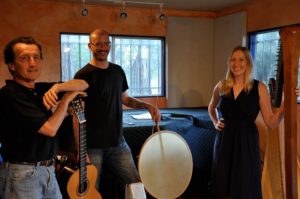
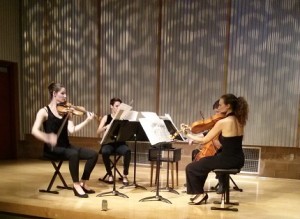

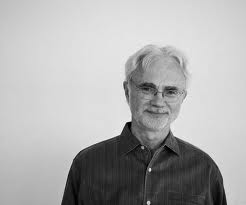
 The San Francisco Bay Area is home to a sizable community of sound artists, instrument inventors, and intonation innovators who spend all their time developing original and never-before-heard ways of relating to music and sound. The local scene got a big national nod in 2008 when
The San Francisco Bay Area is home to a sizable community of sound artists, instrument inventors, and intonation innovators who spend all their time developing original and never-before-heard ways of relating to music and sound. The local scene got a big national nod in 2008 when 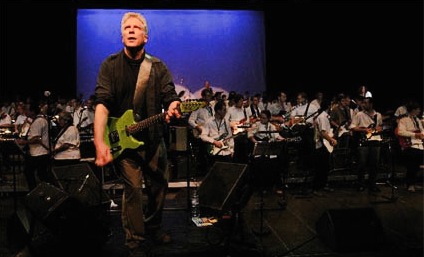
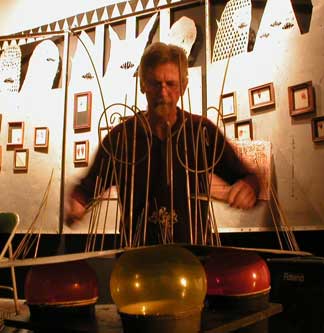 I’ve been working so hard today I’ve forgotten to eat, and it’s in that spirit of lightheadedness and poor impulse control that I share with you the following San Francisco Bay Area new music scene update.
I’ve been working so hard today I’ve forgotten to eat, and it’s in that spirit of lightheadedness and poor impulse control that I share with you the following San Francisco Bay Area new music scene update.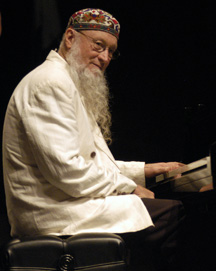
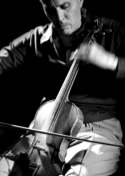
 For the first subject of this column I’ve picked Ben Johnston, someone who has gotten some coverage on this site but remains criminally neglected. Born in Georgia in 1926, Johnston was variously taught by Harry Partch, Darius Milhaud, and John Cage. All three composers had an obvious effect on his music, but he quickly developed his own distinct voice. Best known for expanding on Partch’s experiments with just intonation, Johnston has contributed not only as a composer, but as a theorist and writer as well.
For the first subject of this column I’ve picked Ben Johnston, someone who has gotten some coverage on this site but remains criminally neglected. Born in Georgia in 1926, Johnston was variously taught by Harry Partch, Darius Milhaud, and John Cage. All three composers had an obvious effect on his music, but he quickly developed his own distinct voice. Best known for expanding on Partch’s experiments with just intonation, Johnston has contributed not only as a composer, but as a theorist and writer as well.